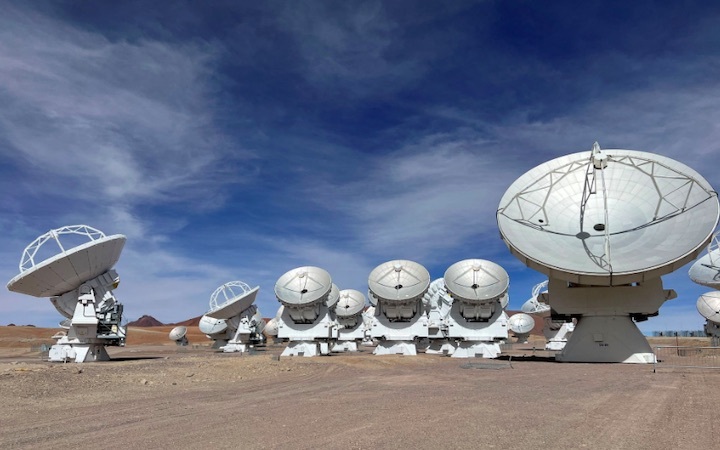26.05.2022 
SANTIAGO, May 24 (Reuters) - Now that Chile's ALMA Observatory is running at full force after the COVID-19 pandemic caused its first shutdown, its director is hoping to double its capacity to better understand black holes.
"We're looking to enhance the capabilities of ALMA over the next 10 years," said Sean Dougherty, ALMA's director.
The Atacama Large Millimeter/submillimeter Array (ALMA) - the largest astronomical project in existence - is a single telescope of revolutionary design with 66 radio telescopes located in the Atacama Desert in northern Chile.
Speaking to a small group of reporters at the observatory, Dougherty said that he's hoping to increase imaging capabilities by a factor of two, providing a more detailed look at the universe and black holes.
"I think its' going to be quite the renaissance in observations of black holes in general," Dougherty said. "I think it's going to be a great motivator and really enhance our understanding of black holes and black hole physics."It takes a lot of logistics to take a picture of a black hole and after Chile's ALMA observatory shut down, it took months to get the observatory running at full force again.
"It was a year before we were actually able to do science again because it's like running a little village," Dougherty said.
From getting water and electricity back up, to getting enough of the staff back on site and operating equipment necessary to move satellites, ALMA needs a number of processes and employees operating to take a single picture.
The massive 12- and 7-meter diameter antennas can be placed anywhere from a few meters to several kilometers apart depending on what scientists need.
The observatory high altitude - 5,000 meters (16,400 feet) above sea level - means employees and equipment are subject to extreme temperature changes and hypoxia, with long-term employees requiring additional oxygen.
But it's this location, in the driest desert in the world, that allows the observatory to sit above most of the atmosphere's water and get essential data about the universe.
ALMA boasts 10 times more details than can be seen by NASA's Hubble Space Telescope.
The planned upgrades, Dougherty says, will "really enhance our astrochemistry capabilities and the possibilities there are endless." Quelle: Reuters
